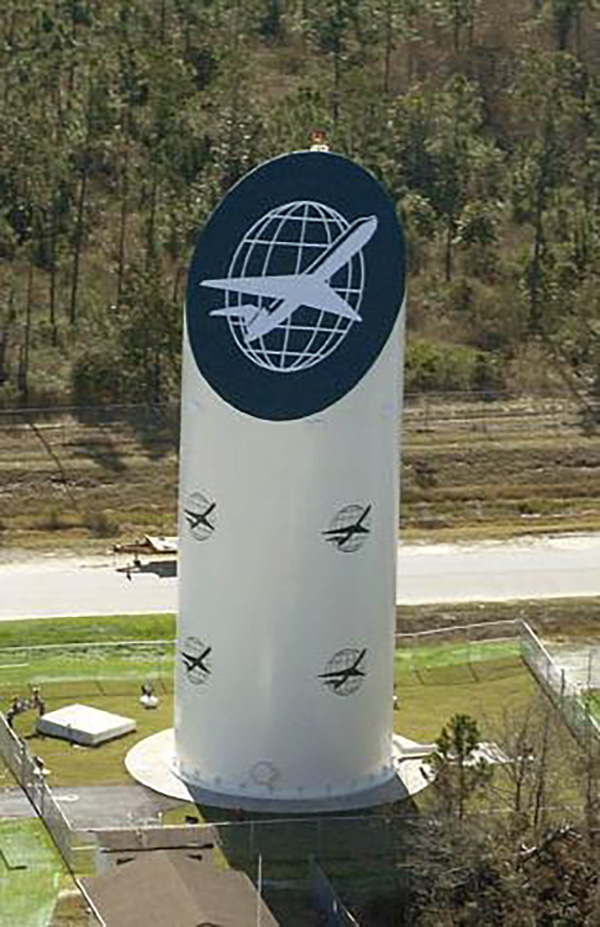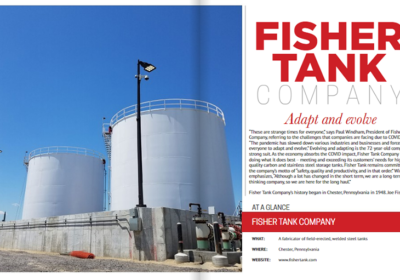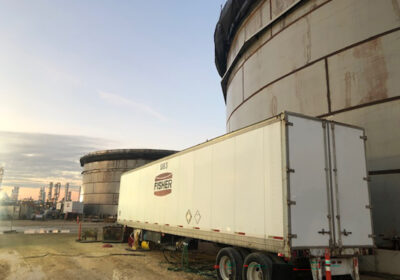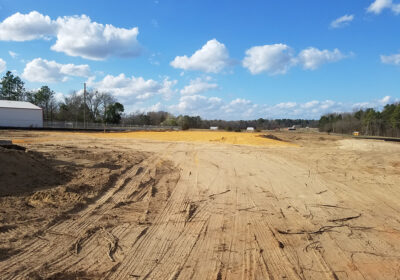STEEL TANKS IN THE MODERN ERA

Fisher Tank Company is pleased to have Wayne Geyer, Executive Vice President, Steel Tank Institute/Steel Plate Fabricators Association, as a featured guest on the Think Tank Blog.
In the modern era, our society depends on storage tanks for many of its comforts and conveniences. Every time we turn on the water faucet at home, clean, potable water flows out for our drinking, cooking, bathing and landscaping needs. Every time we go to the local gas station, we pump gasoline or diesel into our vehicles for our transportation needs. These conveniences would not be possible if we did not have tanks to store these essential liquids.
In the energy market, storage tanks can be found in all shapes and sizes to suit our society’s specific needs. When crude oil is refined, gasoline, diesel, kerosene and many other in-demand petrochemicals are stored at the refinery and transported by pipe or other means to a terminal facility for temporary storage.
Storage tanks at terminals are usually flat bottom reservoir tanks, in capacities as great as a million gallons or more. Tanks are typically erected in the field and built to national standards such as the American Petroleum Institute’s API 650 and API 620.
Special needs for fuel storage
Because we need to protect the environment from exposure to hazardous liquids, fuel storage tanks must be built to be completely leak-free. Steel is the material universally chosen for these mammoth tanks because steel tanks are easy to build, they operate leak-free and they’re compatible with all fuels.
Fuel storage tanks can be 50 feet in height or greater. A static liquid column of 50 feet imposes 25 pounds of pressure for every square inch of ground floor surface area. For a 100’ diameter tank, that’s a total force pushing down on the tank floor of more than 250,000 pounds. The soil under the tank floor serves as its foundation, assuring that it won’t settle over time.
The round shell wall of the tank must contain not only the massive forces of the stored liquid trying to push the walls outward, but also must protect the tank and its contents from forces of nature such as wind, snow, extreme temperature variations, earthquakes and floods. In addition, storage tanks are exposed to cyclic structural fatigue factors as the tanks are constantly being emptied and filled.
Steel: best for fuel storage
Steel is recognized for its strength and consistency. That’s why steel is the material of choice for these tanks that are so vital to the nation’s well-being. The modern era in steelmaking began with the introduction of the Bessemer process in 1858. Since then, inductry has relied on steel for all types of structuresm like skyscrapers, bridges – and storage tanks.
- Steel is ductile, meaning that it bends under designed operating conditions, rather than cracking or breaking as can occur in more brittle materials like plastic.
- Steel is strong. The fuels processing industry also utilizes pressure vessels containing liquids and gases under hundreds and sometimes thousands of pounds per square inch of pressure. Nearly all pressure vessels are made of steel due to its strength.
- Steel can be composed for various qualities. Steel mills produce hundreds of thousands of tons of steel annually in all sorts of shapes. Steel tanks commonly use steel plate to form the tank, but structural steel shapes are sometimes used to brace the roof. Simple chemistry changes make it easy to produce higher-strength or more corrosion-resistant steels. Mills constantly monitor chemistry and steel properties to verify compliance with numerous ASTM standards.
- Steel is strongest under tension and handles compressive stresses with ease. The forces the liquids apply within a steel tank shell push against it, but the tensile strength of steel retains the tank construction’s integrity. Concrete, on the other hand, is very strong under compression, but much weaker in tensile strength. That’s why concrete’s vulnerabilities are often addressed by adding steel reinforcement bars.
Further downstream in the oil industry, steel tanks are built in cylindrical shapes for underground or aboveground installation. Cylindrical aboveground tanks can be oriented vertically, similar to the terminal tanks, or they can be oriented horizontally and mounted on supports. Large trucking firms needing to fuel entire fleets often install double-wall, horizontal tanks that have been tested to national Underwriters Laboratory standards for a two-hour fire rating.
Have you ever seen back-up generators used to provide electricity when the power goes out? Usually these generators are mounted on top of rectangular fuel storage tanks, usually no more than a foot or two in height.
At gas stations, gasoline and diesel storage tanks are built with secondary containment and with a corrosion-resistant design. Today’s convenient store might have underground tanks of 20,000 gallons or 30,000 gallons, built with compartments to store the many fuels being marketed today, including E85, biodiesel, E10 gasoline and ultra low sulfur diesel. These tanks are built to UL and Steel Tank Institute standards. Underground tanks are horizontal, cylindrical in shape, and withstand earth loads and groundwater from their underground position.
Steel tanks in your community
In the water industry, municipalities build water tanks at higher elevations to assure the pipe network delivers water under gravity pressure to every household. In geographic regions where the topography is hilly, flat bottom reservoir tanks are sometimes built at higher locations. In relatively flat areas, steel water tanks are built elevated 60’ to 90’ above grade.
Water storage tanks are designed and built to AWWA standards D100 and D107. They can take many shapes:
- Flat bottom reservoir
- Standpipe
- Fluted column
- Single pedestal or multi-column
- Composite
- Toro-conical, ellipsoidal, dome or cone roof
Steel is design-flexible. Just about any shape or form can be made of steel, and steel water storage tanks are noted for taking advantage of this flexibility. Your community’s water storage tank may have a unique shape and style, thanks to steel’s inherent ductile properties.
Water tanks are often a recognized landmark in our communities, designed and artfully enhanced for aesthetic appeal. There are steel water storage tanks that look like teacups, baseball bats, pineapples, catsup bottles, roses, apples, hot air balloons, lighthouses and even Mickey Mouse®. Other water tanks are designed to blend in with the natural landscape. Thanks to today’s high-tech coatings, tanks can become part of a community’s culture and trademark.
A century of service
Steel is durable, remember. With routine inspection and maintenance, steel tanks can last indefinitely. STI/SPFA honors water storage tanks that have been in operation for over 100 years with membership in our Century Club.
Obviously, the total cost of ownership is significantly reduced over 100 years. The longer you live in your home, or with any other major capital purchase, the better the economics of the original purchase become. The same is true of a steel tank. Few non-metallic tanks will last 50-100 years, but steel tanks certainly can. All tanks, whatever they’re made of, require regular inspection and maintenance, but steel responds to this care with especially long life.
Steel is green
And when a tank is ready for retirement, all of the steel can be sent to a salvage yard for recycling. More than 92% of all steel in North America today is recycled. For every ton of steel recycled, 2500 pounds of iron ore, 1400 pounds of coal and 120 pounds of limestone are conserved, as well as the energy to mine these resources.
So remember steel as you go about your daily life. Steel’s traits and properties are what make it a vital part of our society:
- Strength
- Durability
- Compatibility with the liquid stored
- Consistency and uniformity
- Sustainability
RESOURCE LINKS
Types of water storage tanks and unique designs
Info on STI fuel storage tanks
Steel’s properties, compatibility, sustainability and more
STI/SPFA’s Water Storage Tank Century Club
STI/SPFA’s free Total Cost of Ownership on-line tool kit
Article and resource links contributed by: Wayne Geyer, Executive Vice President, Steel Tank Institute/Steel Plate Fabricators Association
Click here to read more of our blogs




